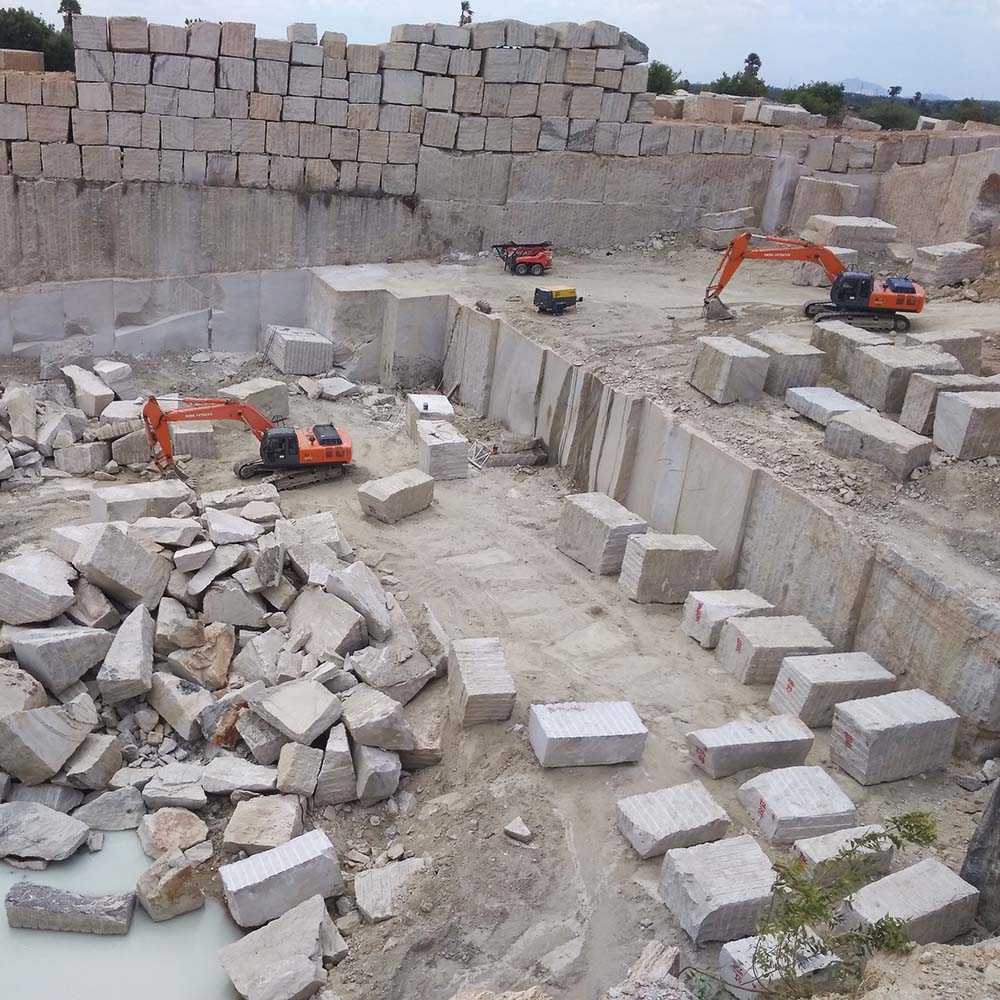Introducing the Mysteries of Granite Quarrying: Where Strength and Sophistication Meet
The globe of granite quarrying is a realm where the raw toughness of nature converges with human creativity to develop structures that stand the test of time with an air of style. From the depths of quarries to the precise sprucing up in workshops, the procedure of transforming granite into building marvels is a complicated dancing of practice and development. As we peer right into the midsts of this ancient craft, we begin to discover the surprise intricacies that shape the extremely significance of our built environment.
The Origins of Granite Quarrying
In the annals of building background, the beginnings of granite quarrying are shrouded in a tapestry of old workmanship and geological marvels. Dating back to ancient Egypt and Mesopotamia, the removal of granite from quarries noted the start of a journey that would eventually result in the development of a few of the globe's most legendary frameworks.
Granite quarrying's origins can be mapped to the competent craftsmens who recognized the stone's resilience and aesthetic charm. With a combination of primitive tools and sheer decision, these early quarry workers uncovered granite blocks that would end up being the foundation of civilizations.
As people advanced, so did the methods of quarrying granite. The Romans, renowned for their design prowess, developed sophisticated methods for extracting granite to construct monoliths, holy places, and roadways that stood the test of time.
The tradition of these ancient quarrying practices continues to shape modern architecture, with granite remaining an icon of toughness and style in building projects around the world. (granite quarries in south africa)
Tools of the Quarrying Profession
The development of granite quarrying methods from old civilizations to modern times highlights the vital role played by the tools of the quarrying sell forming the market's practices. In old times, quarrying tools were simple, frequently containing knives, hammers, and wedges made from materials like bronze or iron. These devices needed considerable manpower and time to extract granite obstructs from quarries.

In addition, the intro of pneumatically-driven devices and high-powered machinery has considerably minimized the physical labor needed in quarrying procedures, enhancing worker safety and productivity. As the quarrying industry remains to innovate, the devices of the profession continue to be at the center of driving progression and forming the future of granite removal.
Removing Blocks of Granite
Making use of accuracy machinery and progressed methods, the extraction of granite obstructs from quarries has actually become a sophisticated procedure in the contemporary quarrying sector. Managed blasting techniques are after that employed to damage apart the granite into additional reading manageable areas.

Sprucing Up and Completing Techniques
To achieve a remarkable surface area on granite visit this site blocks, proficient artisans employ a series of thorough polishing and completing methods. After the initial extraction and forming processes, the granite obstructs go through a comprehensive polishing stage to enhance their all-natural appeal and sturdiness. One common technique used learn the facts here now in brightening granite is diamond abrasion, where commercial diamonds are made use of to grind and polish the rock to a smooth surface. This procedure not only develops a lustrous surface but also makes certain uniformity in shade and texture throughout the granite block.
In addition to polishing, ending up techniques are applied to more improve the granite's appearance. These methods might include flaming, developing, or cleaning, each offering one-of-a-kind structures and surfaces to match different aesthetic choices. Flaming, for example, involves exposing the granite surface to high temperature levels to create a rough, textured surface, suitable for exterior applications where slip-resistance is essential. Developing, on the other hand, supplies a matte surface that is smooth to the touch, ideal for indoor counter tops and floor covering. By meticulously selecting and applying these polishing and finishing methods, artisans can transform raw granite blocks into elegant pieces that showcase both stamina and sophistication.

Environmental Influence and Sustainability
With the expanding emphasis on ecological consciousness in the sector, granite quarrying methods are increasingly inspected for their impact on natural deposits and long-lasting sustainability. Quarrying for granite can have significant ecological implications. The extraction procedure typically entails making use of hefty machinery, dynamites, and huge quantities of water, leading to habitat devastation, dirt erosion, and water pollution. Furthermore, the transport of granite from quarries to processing facilities creates carbon emissions, even more adding to environmental deterioration. granite quarries in south africa.
To alleviate these influences and ensure sustainability in granite quarrying, industry stakeholders are embracing different procedures. Implementing advanced technologies to decrease energy usage and water use, recovering quarried land for eco-friendly reconstruction, and advertising liable sourcing practices are some strategies being employed. Additionally, accreditations such as the Forest Stewardship Council (FSC) and the Leadership in Energy and Environmental Design (LEED) help consumers identify environmentally friendly granite items.
Final Thought
In conclusion, granite quarrying is a procedure that needs specialized tools and strategies to essence blocks of granite and polish them to a high degree of surface. While the environmental influence of quarrying can be considerable, efforts are being made to enhance sustainability techniques in the market. Overall, granite quarrying is a fragile balance in between taking advantage of the strength and style of this natural rock while lessening its impact on the setting.